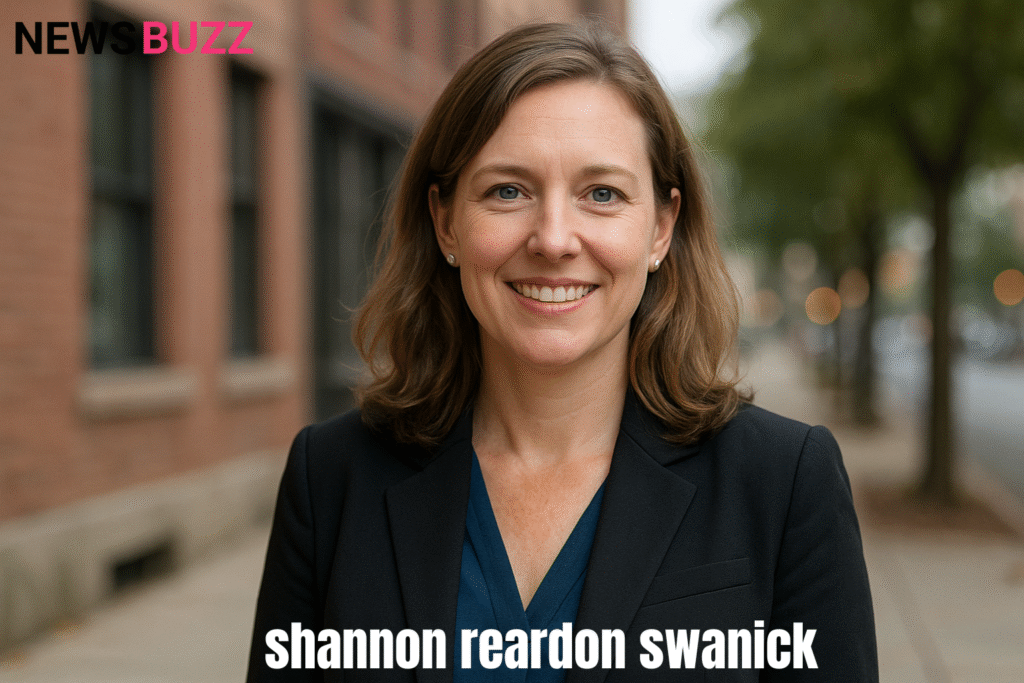Introduction
In today’s increasingly complex world, leaders who can blend community insight with innovative problem-solving are more valuable than ever. Shannon Reardon Swanick stands out as a trailblazing figure in this space—an advocate for digital equity, a champion of urban innovation, and a pioneer in civic engagement.
Her work spans multiple areas of social impact, including education reform, technology access, neighborhood development, and mentorship. With a grounded yet forward-thinking approach, Shannon has become a respected name in public service, nonprofit innovation, and ethical civic tech. This article offers a deep dive into her background, contributions, leadership philosophy, and actionable frameworks that others can learn from.
Early Life and Passion for Service
Shannon Reardon Swanick’s path into public impact began with a solid foundation in community values. Raised in a modest household where education, fairness, and civic duty were emphasized, Shannon developed an early awareness of social disparities—particularly in urban and underserved areas.
After earning her degrees in psychology and communications, she focused her energy on working with youth, marginalized groups, and local policymakers. What set her apart from the start was a natural ability to listen deeply, design solutions around real needs, and build bridges between unlikely partners.
Her entry into public-facing leadership roles began not in the boardroom but in neighborhood libraries, afterschool centers, and city forums—places where real challenges and voices shaped her mission.
Also Read: Jane Mary Ashton: A Quiet Force Behind Creativity and Character
Civic Innovation and Community Impact
One of Shannon’s hallmark traits is her belief in data-informed empathy—balancing analytics and human experience to shape policy and programs.
Highlights of Her Work Include:
- Digital Equity Labs: A nonprofit initiative providing internet access, training, and tools to hundreds of families in underserved areas.
- Mentorship Circles: A youth leadership program that pairs students with community mentors, resulting in measurable gains in academic performance and college acceptance rates.
- Community Data Initiative: A project aimed at using ethically gathered data to improve local infrastructure, safety, and neighborhood planning.
Shannon’s influence extends beyond just launching programs—she builds ecosystems that empower others to continue and scale the work long after her direct involvement.
Leadership Style and Core Philosophy
Shannon’s leadership style emphasizes collaboration over command. She believes that community challenges must be solved with people, not for them. This inclusive philosophy translates into her unique approach to program design and team development.
Core Leadership Values:
- Trust-building through transparency and follow-through
- Iterative design, piloting small solutions and scaling what works
- Empowerment over control, giving community members ownership of outcomes
Her organizational strategy is built around feedback loops, regular community engagement, and measurable social returns—not just surface-level metrics.
Step-by-Step Guide: Designing a Community-Based Program Like Shannon
If you’re interested in replicating Shannon Reardon Swanick’s approach to civic innovation, here’s a simple, actionable framework inspired by her methods:
Step 1: Identify Community Needs
Start with listening sessions, focus groups, or community surveys. Collect feedback without imposing assumptions.
Step 2: Define a Clear Purpose
Set a goal that solves a tangible issue (e.g., improving digital access or mentoring high-risk youth).
Step 3: Co-Create the Solution
Bring together stakeholders—residents, local leaders, nonprofits—and co-design the solution together.
Step 4: Pilot the Program
Launch on a small scale with a manageable group to test effectiveness.
Step 5: Collect Data
Track success using both quantitative (e.g., graduation rates) and qualitative (e.g., testimonials) outcomes.
Step 6: Adjust and Scale
Iterate based on results and expand the program where it has proven successful.
Tip: Keep your impact localized and focused before considering expansion.
Ongoing Work and Legacy
Shannon is now working on Neighborhood Signals, a project that blends smart city technology with community storytelling—creating dashboards where residents can see how their neighborhoods are performing in real-time while maintaining data privacy.
Her future goals include launching a national network for civic innovators, where grassroots leaders can share insights, learn from one another, and access resources that foster sustainable change.
Shannon’s approach is not about quick fixes. It’s about long-term capacity building—empowering others to lead, collaborate, and innovate within their own communities.
Conclusion
Shannon Reardon Swanick is more than a community leader—she is a systems thinker, social architect, and inclusive strategist working to bridge the gap between policy and people. Her work proves that meaningful civic progress doesn’t come from top-down mandates, but from bottom-up collaboration, informed strategy, and genuine empathy.
By understanding her principles and processes, anyone interested in social impact—whether in tech, education, urban development, or nonprofits—can apply her approach to create change that lasts.
FAQs About Shannon Reardon Swanick
1. Who is Shannon Reardon Swanick?
She is a civic innovator and social impact leader focused on urban development, digital equity, and community empowerment.
2. What are some of her key initiatives?
Shannon is known for programs like Digital Equity Labs, Mentorship Circles, and the Community Data Initiative—all designed to reduce disparities in access and opportunity.
3. What makes her leadership style unique?
She leads through collaboration, transparency, and co-creation, often engaging directly with the communities she serves to ensure solutions are inclusive and lasting.
4. What is Neighborhood Signals?
It’s a smart city initiative that uses anonymized community data and storytelling to help cities monitor neighborhood well-being in a transparent, ethical way.
5. Can her approach be adapted for other communities?
Absolutely. Her step-by-step framework is designed to be scalable, locally adaptable, and focused on empowering people from within the community.



